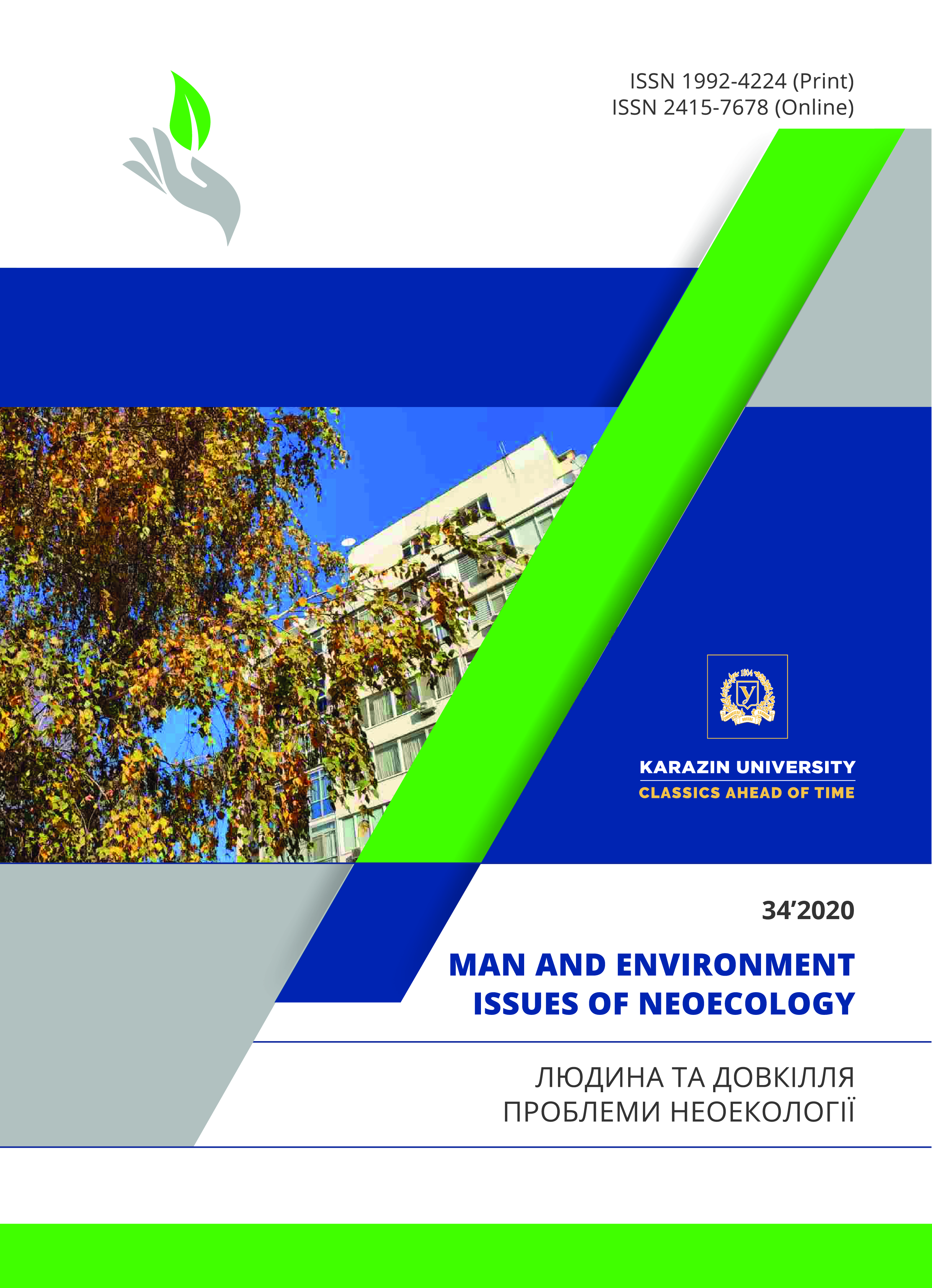Current Problems and Features of Water Ecotourism Development in the Left-Bank Ukraine
Abstract
Analysis of development peculiarities of the water ecotourism in the Left-Bank Ukraine shows that a number of available services in this sphere doesn’t meet the demand and resource potential of natural complexes.
Purpose. To identify possibilities of development of water tourism on the rivers in the Left-Bank Ukraine.
Results. The article presents the description of the main hydrological and hydro-ecological characteristics of the rivers in the Left-Bank Ukraine. All rivers run through low lands that is good for the development of water tourism, including popular water rafting, kayaking, and yachting. Riverbanks are notable for beautiful landscapes and numerous cultural monuments which considerably increase the attraction of the water objects. One of the key priority areas for the development of water ecotourism in the east of Ukraine is exploring of water objects for recreation. Natural conditions of the Left-Bank Ukraine make it possible to develop the water objects of ecological, recreation and sport tourism. This requires the introduction of the current innovative approaches for the development and promotion of a tourist products. The author analyses the differences of hydrological properties of the rivers in the Left-Bank Ukraine depending on the physical and geographical conditions of the territory. It has been noted that in the northern part of the investigated region the rivers belong to the Polissia type. In Donetsk high land rivers have a mountain character, the rest belong to the rivers running through separate valleys. It has been emphasized that the characteristics of the rivers and their banks as recreation and tourism objects change according to the natural conditions of the territories. Based on the above-mentioned typology the territory of the Left-Bank Ukraine is zoned according to the potential for the development of water ecotourism. Three water-touristic regions were determined on its territory: Polissia, field area, and Donetsk area.
Conclusions. The development of the water ecotourism in the Left-Bank Ukraine considerably depends on the level of riverside infrastructure. The structure optimization in the river tourist recreation systems aimed at using resources potential of water objects and maximum meet of the needs of vacationers could be based on the development of the network of water itineraries and creating conditions to spread active forms of water recreation. The task of improving riverside infrastructure could be solved not only at the level of the local tourist agents specializing in the water ecotourism and maintains active business links with similar tourist agents in other countries throughout the world.
Downloads
References
Beidyk, O.O. (2001). Recreational and tourism resources of Ukraine: the methodology and methods of analysis, terminology, zoning: monograph. Kyiv. (In Ukrainian).
Hetman, V.I. (1999). Saving landscape diversity and developing ecological tourism on natural-reserved territories. Proceedings of the International Scientific and Practical Conference: Tourism on the bound-ary of the XXI century: education, culture, ecology. Kyiv, 1999, October 18-20, (pp.191–193). Kyiv: KITEP. (In Ukrainian).
Denysyk, H.I. (2001). The forest-and-field of Ukraine: A monograph. Vinnytsia: Tezys. (In Ukrainian).
Zinko, Yu.V. & Shevchuk, O.M. (2003). Ecological tourism in the national nature parks of the Western Ukraine. Proceedings of the International scientific and practical conference dedicated to the 120-th anniversary of geography in the Lviv university. Lviv, 2003, September 24-26, (pp.239-241). Lviv: Publishing Centre of the Lviv university. (In Ukrainian).
Liubitseva, O.O., Pankova, Ye.V. & Stafiichuk, V. I. (2007). Tourism resources of Ukraine. Kyiv: Al-terpres. (In Ukrainian).
Yatsyk, A.V. (Ed.). (1991). Small rivers of Ukraine: manual. Kyiv: Urozhai. (In Ukrainian).
Oliinyk, Ya.B. & Hetman, V.I. (2002). Ecological tourism on the terrains of national nature parks and biosphere reserves of Ukraine during the international year of ecological tourism and mountains. Bulletin of Taras Shevchenko National University of Kyiv Geography, (48), 5–11. (In Ukrainian).
Pankova, Ye.V. (2003). Tourism land knowledge. Kyiv: Alterpres. (In Ukrainian).
Smal, V.V. & Smal, I.V. (2003). The world experience of ecological tourism development. Ukrainian geographical journal, (3), 58–64. (In Ukrainian).
Timets, O.V. & Sovhyra, H.Ye. (2005). Fundamentals of the recreational geography. Nature, resource poten tial of regions. Kyiv: Naukovyi Svit. (In Ukrainian).
Fisunenko, O.P. & Zhadan, V.I. (1994). The nature of the Luhansk region. Luhansk. (In Russian).
Adamenko M.I., Kyselov Iu.O. & Rudyi R.M. (2020). Conceptual fundamentals of ecological tourism development in Ukraine. Journal of Education, Health and Sport., 10(8), 298-307. http://dx.doi.org/10.12775/JEHS.2020.10.08.035
Authors reserve the right of attribution for the submitted manuscript, while transferring to the Journal the right to publish the article under the Creative Commons Attribution License 4.0 International (CC BY 4.0). This license allows free distribution of the published work under the condition of proper attribution of the original authors and the initial publication source (i.e. the Journal)
Authors have the right to enter into separate agreements for additional non-exclusive distribution of the work in the form it was published in the Journal (such as publishing the article on the institutional website or as a part of a monograph), provided the original publication in this Journal is properly referenced
The Journal allows and encourages online publication of the manuscripts (such as on personal web pages), even when such a manuscript is still under editorial consideration, since it allows for a productive scientific discussion and better citation dynamics (see The Effect of Open Access).





